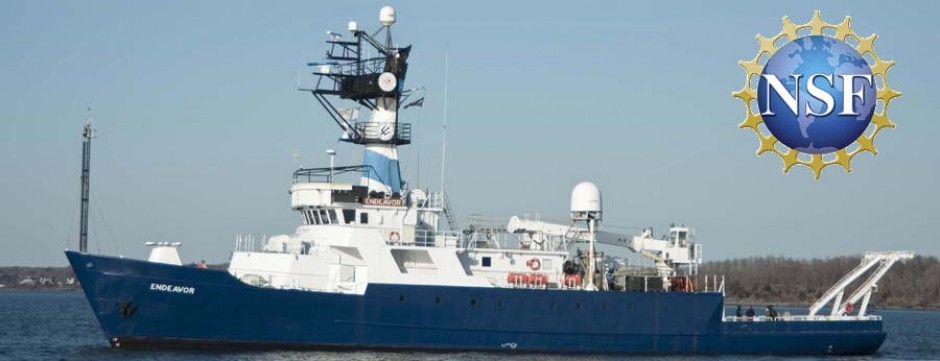One of the most important things we’re doing on this cruise is to take “CTD”casts. CTD stands for “conductivity-temperature-depth”, and instrument that measures what you’d guess it would: conductivity, temperature, and depth* of water as it is lowered over the side of the boat. In practice, conductivity stands for the quantity of salt in the water. Taken together, these tell us the density of water at each depth, which tells us a lot about where the water comes from and how it is moving.
In practice, the CTD rosette comes with lots of other instrumentation, which tell us, for instance, the amount of chlorophyll in the water (an indicator for phytoplankton), the flux of light from the surface, and the turbidity of the water. Best of all – for me, at least – it is festooned with “Niskin bottles” which collect water at set depths. Since the CTD returns data to the ship in real time, we often make decisions about where to collect water samples in real time. For instance, I often collect water from the depth at which chlorophyll is most abundant. To find this, we profile the water column while the CTD is descending, make some decisions, and collect the water on the way back up.


